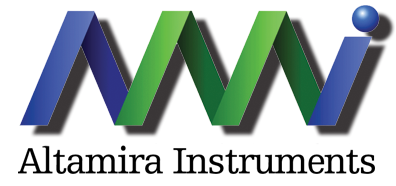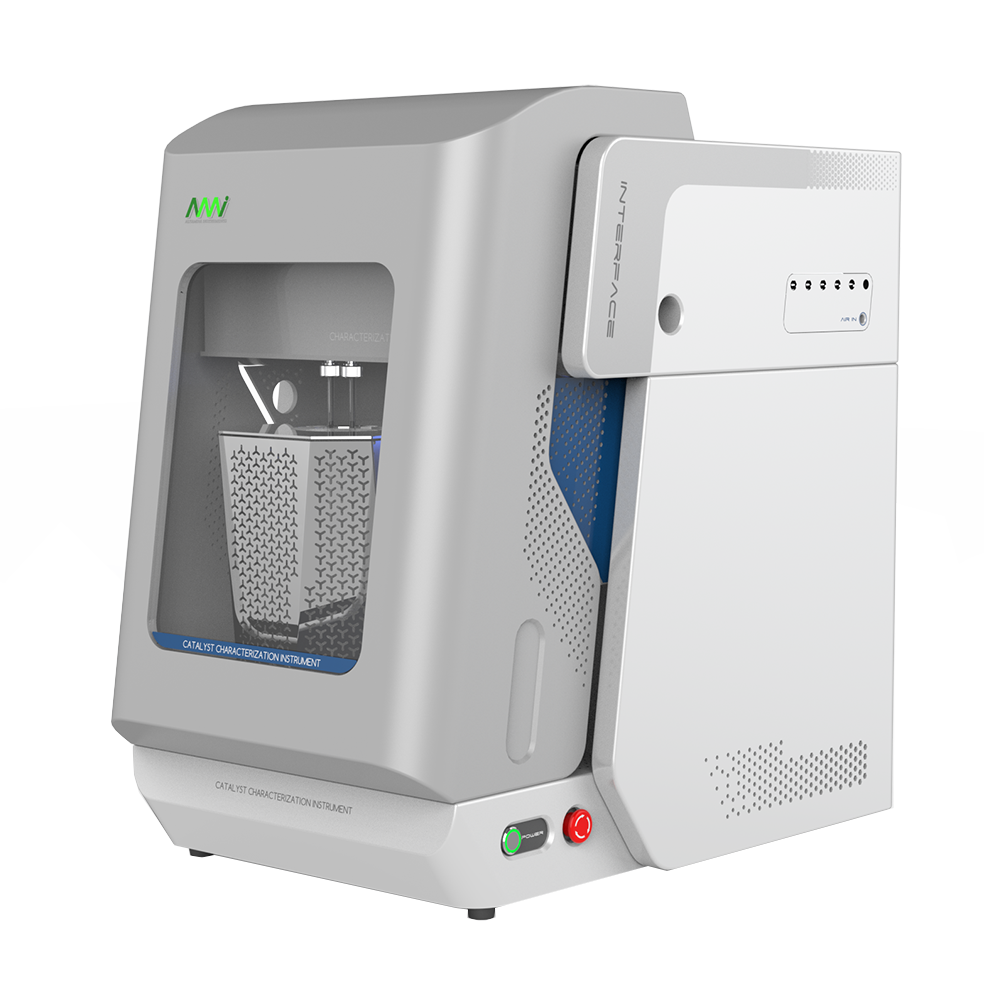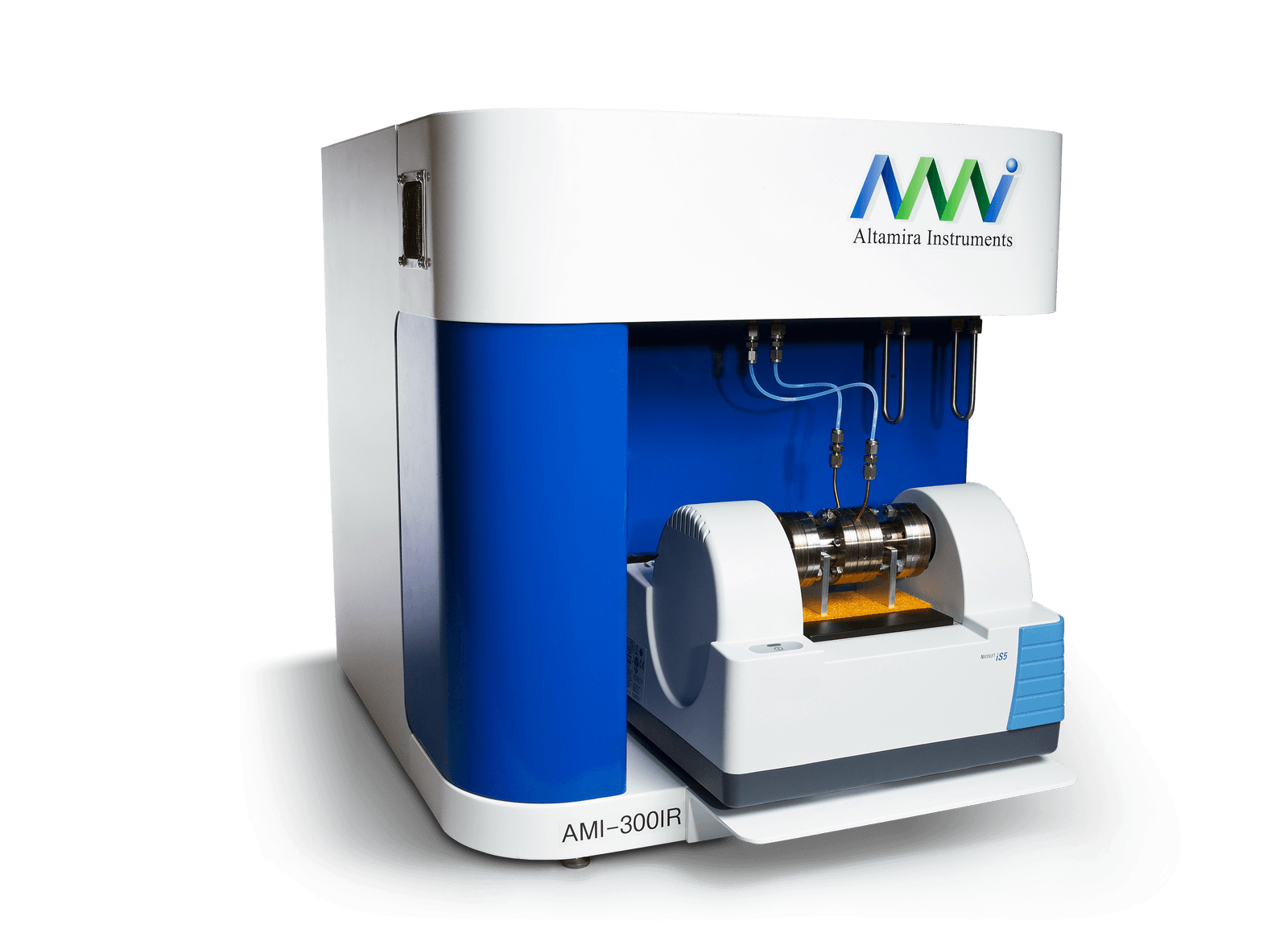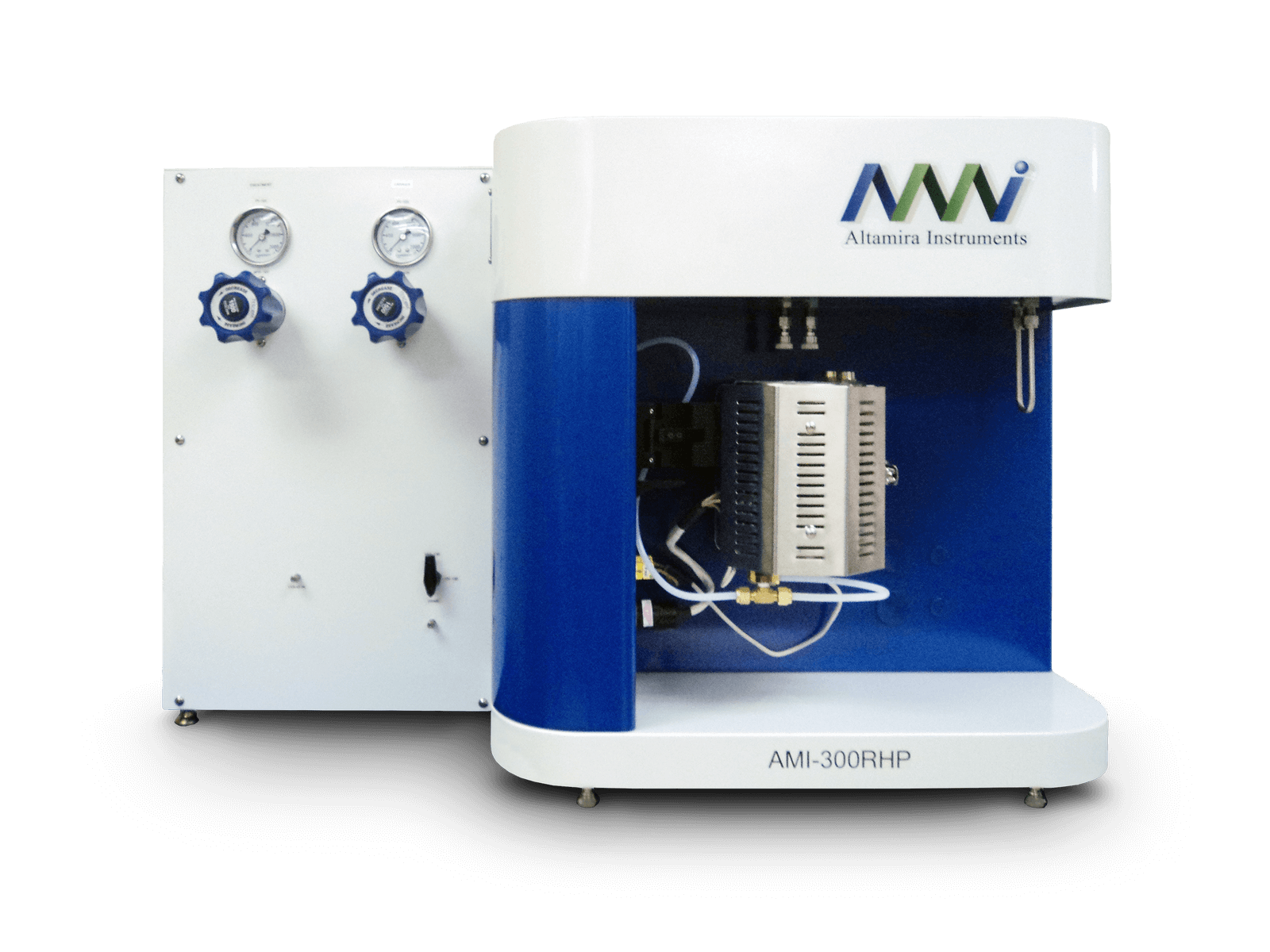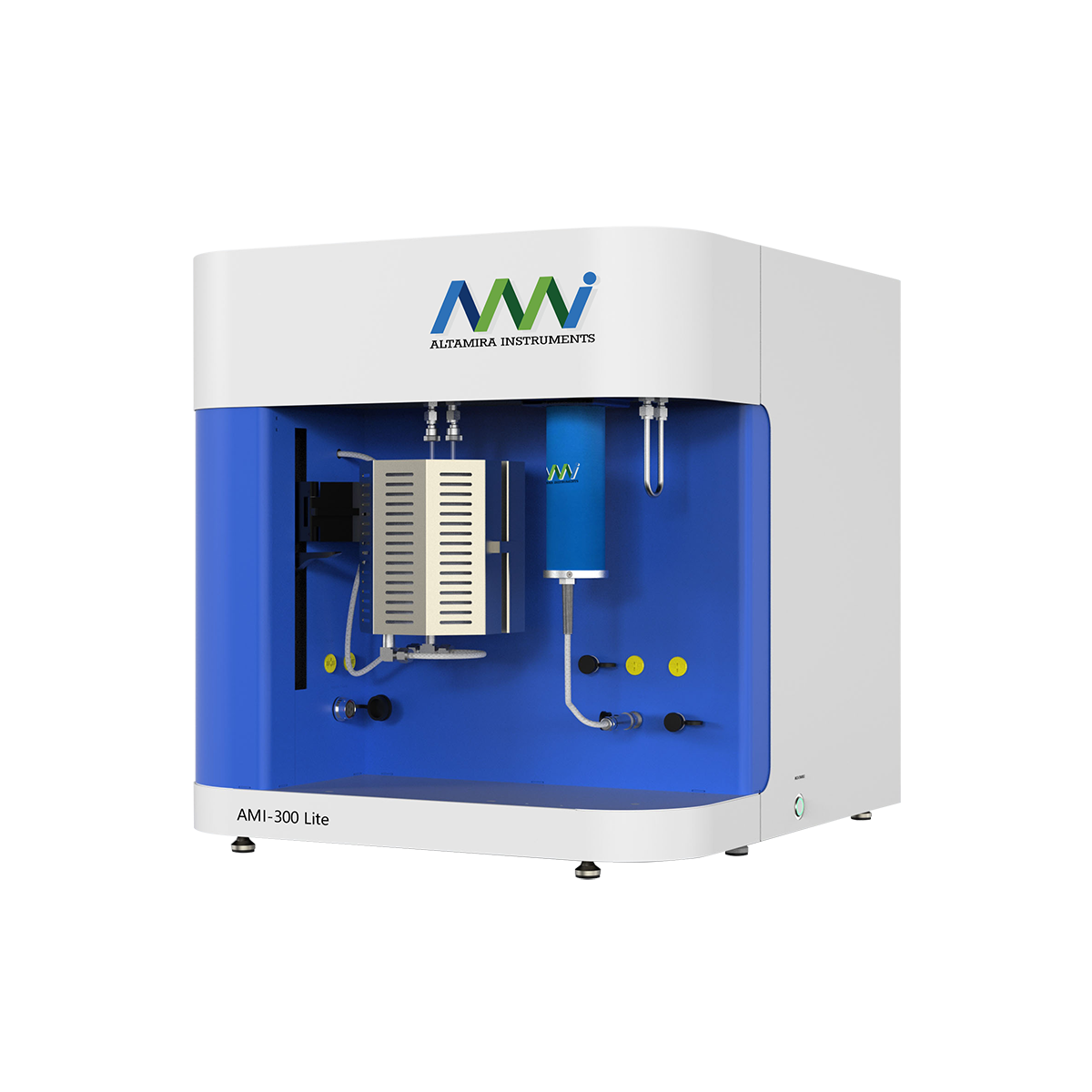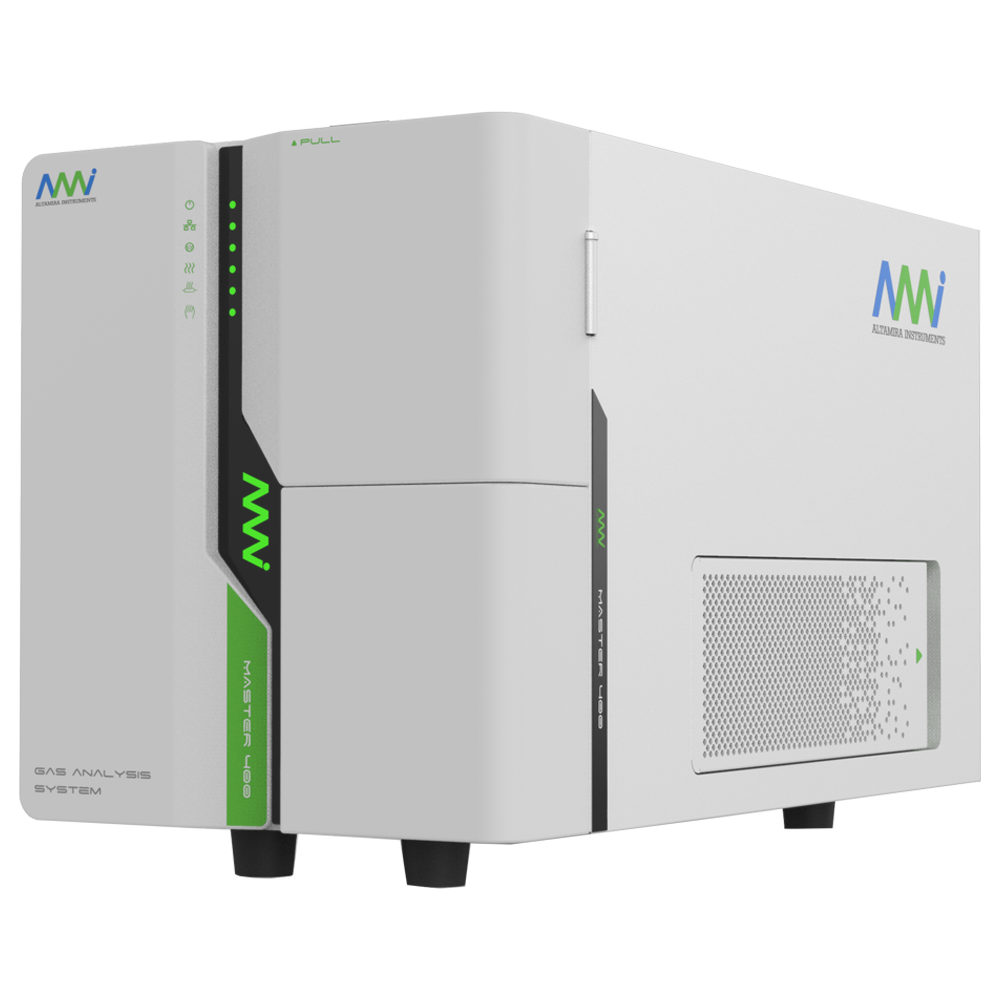CHEMISORPTION ANALYZERS: THE AMI CHEMI FAMILY
AMI-400TPX Catalyst Characterization Instrument
AMI-300Lite
Master 400: Quadrupole Mass Spectrometer
AMI
The AMI-300 is a chemisorption analyzer and is the “flagship” of the AMI Family. It is the technical basis for all of the remaining models. All of the AMI instruments feature a stand-alone PC that can be tasked to perform other functions in the laboratory besides controlling the AMI instrument. Likewise, all of the AMI instruments feature dependable, LabVIEW-based control software. All of the AMI instruments are designed for performing the traditional catalyst testing experiments on an unattended basis. However, if your research requires increased throughput with the same degree of automation as the AMI-300, there are two, three, five and eight workstation versions of the AMI-300 available.
If your needs fall more toward reaction experiments such as steam reforming, water-gas shift, auto thermal reforming, or preferential oxidation reactions, the AMI-300R is available with one or more liquid pumps and vaporizers to efficiently study those kinds of reactions. If you need to study reactions under pressure, the AMI-300R HP can be operated with pressures up to 100 bar (and higher on a custom instrument).
If your needs fall more toward a less costly line of instruments, the AMI-300Lite, and the three, five, and eight station versions provide all of the traditional catalyst testing capabilities on a budget-conscious basis.
If your interests take you to techniques where it is possible to learn about the nature of the sites, the type of adsorption, or whether there exist multiple types of sites, the AMI-300ir would suit your needs.
Please review the AMI Family Map to see what instrument meets your needs. You may view the AMI Family Brochure here. Below is a technical description of the AMI-300:
AMI-300
Perform dynamic temperature-programmed catalyst characterization experiments unattended with the latest generation fully automated chemisorption analyzer from Altamira Instruments. Determine metals dispersion, relative activity, adsorption strength, in one third the time of traditional volumetric methods. Use the AMI-300 to analyze the off gas with the built-in TCD, or specify a mass spectrometer to provide integrated results with up to 8 masses displayed simultaneously. Additional masses and alternate detection devices, like a GC or FID are also available. Let us customize the instrument so you can, for example: (1) also use it as an atmospheric reactor, (2) carry out lengthy pre-treatments in a separate station (3) provide fast-switched feed compositions to mimic lean-rich burn scenarios; (4) provide SSITKA capability, and many more. The leader in catalyst characterization since 1985, Altamira Instruments is the catalyst researcher’s primary resource for automated catalyst test instruments and bench-scale reactor systems.
Dynamic Chemisorption
The AMI-300 is the latest generation automated chemisorption analysis instrument offered by Altamira Instruments. Developed by and for catalyst researchers, it and its predecessors, the AMI-1 the AMI-100, and the AMI-200, were first in the industry to offer a fully automated system capable of performing the major dynamic techniques required for fully characterizing a catalyst. The AMI-300 utilizes our proven technology for performing the following dynamic procedures:
- Temperature programmed desorption (TPD) .
- Temperature programmed reduction/oxidation (TPR/O)
- Temperature programmed reaction (TPRx)
- Pulse chemisorption
- Catalyst treatment
- Dynamic BET surface area
- Pulse calibration
Up to 99 procedures can be linked together consecutively to provide a complete characterization experiment. All experimental procedures can be designed and stored for easy retrieval.
Hardware and Operation
The AMI-300 is a fully automated catalyst characterization instrument wherein the LabVIEW based software is used to switch gas streams, control gas flow rates, blend gases, control temperatures, control ramp rates, and to collect all the data needed to quantify the adsorption and desorption of gas molecules on the surface of a catalyst.

Features
- High-precision electronic mass flow controllers which ensure a stable baseline with changing temperatures and also ensure quality of data
- Use of 1/16" stainless steel tubing to minimize dead volume and reduce peak spreading.
- A clamshell furnace with adjustable mounting to ease insertion and removal of samples.
- Capability of heating catalyst samples to 1200°C with linear temperature ramps from 1°C to 50°C per minute. (Higher and lower ramp rates are also available).
- A sub-ambient option which provides the capability to operate linearly, between -130°C and 1200°C.
- Automatic air-cooling of the furnace which is provided to speed the time between experiments.
- A Universal Temperature Zone which controls the temperature of all valves and lines downstream of the reactor. The temperature of this zone is controlled by the software and serves to prevent both condensation and retention of the adsorbate in valves and lines upstream of the detector.
- A saturator is provided as an option to suffuse the treatment gas with liquid vapors. The temperature of the saturator is controlled by the software. In applications where condensation of liquid vapors in the line between the saturator and the Universal Temperature Zone is a concern, a reflux heater is available to ensure that no condensation takes place.
- A highly linear Thermal Conductivity Detector (TCD) is standard. The resolution of the TCD is operator defined, and is controlled by the software.
- A choice of TCD filaments is offered to maximize sensitivity, and chemical compatibility of the instrument
Software
Computer Control and Data Acquisition
The AMI-300 is fully automated and computer controlled for ease of operation and reliability. It is designed so that experiments can be run on an unattended basis.
The PC, supplied with a Windows based operating system, can be networked, and is capable of managing other laboratory tasks in addition to operation of the instrument. The control and data acquisition functions are performed by LabVIEW applications software. Using this software, a complete experiment can be set-up in minutes, and it can be saved for future use or modification.
The control portion of the software controls and regulates all valve positions, temperatures, flow rates, and detector parameters. Data acquisition occurs at a selected rate for optimum performance. An “Overview” screen shows the status of the unit at a glance, providing information on the position of all valves, type of gas connected to each port, temperatures, and detector signal. Lines change color to illustrate the current flow path. In manual mode any valve can be switched just by a click of the mouse on its icon. Gas flow and temperature set points can be entered from this screen.
The most sophistocated data-handling package in the industry is included with the AMI-300. This package features easy Windows navigation and allows the user to display and integrate signal peaks, calculate chemisorptive parameters, peak fit, and overlay data, quickly and accurately.
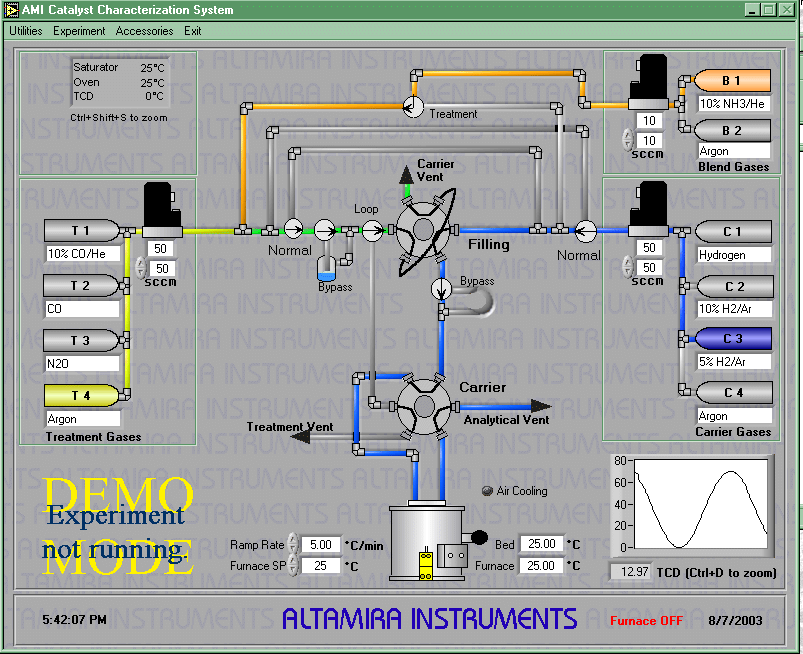
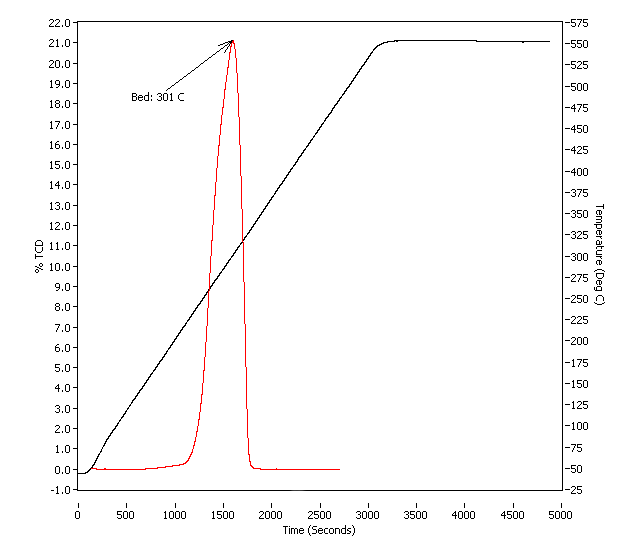
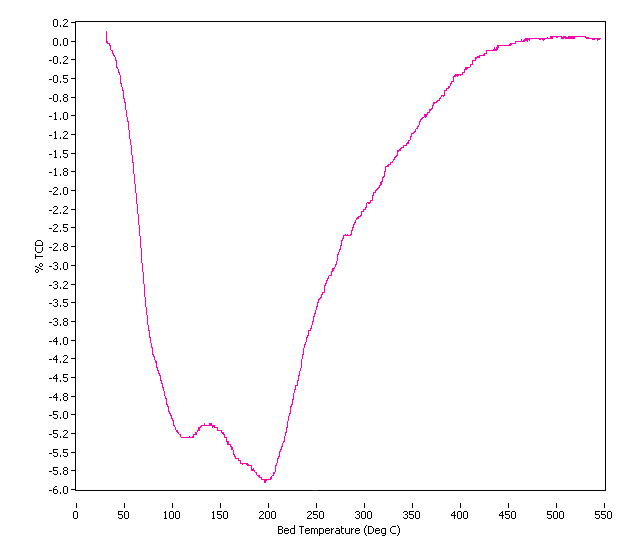
Detectors
The AMI-300 comes standard with a highly linear TCD. In addition to the TCD, AMI instruments have been delivered with a wide range of auxiliary detection devices.
Choices of auxiliary detectors have included:
- Mass Spectrometer
- Flame Ionization Detector
- Flame Photometric Detector
- Gas Chromatograph with FID/TCD/FPD
- FTIR
Any detector, that provides an analog output or which can communicate through DDE, Serial ports, OPC, ActiveX, or other Windows protocols can be triggered by the AMI-300. The degree to which the auxiliary detection device is to be integrated with the instrument can be specified and incorporated into the control software.
Gas Blending
The AMI-300 comes standard with gas blending capabilities, obviating any need to purchase expensive gas blends to conduct experiments such as TPR or TPO. The AMI-300 includes an auxiliary gas line by means of which a gas can be mixed with the carrier gas to provide custom-blended gases. An in-line static gas mixer assures homogeneity of the resulting blend. The gas blending capability also facilitates the use of the AMI-300 as a gas-phase, atmospheric reactor.
Customization
Altamira Instruments was founded by catalyst researchers. We understand your requirements. Our experts are available to answer your questions and help in your applications. Our strength lies in being able to customize a system to meet your exact needs. Examples of some of Altamira’s instrument customizations include:
|
Additional gas feed(s) |
Sulfur-tolerant instruments |
|
Corrosive service package |
Auxiliary pretreatment station |
|
High pressure characterization AMI-300HP |
Fast switching gas feeds |
|
Methanizer, incorporated with FID |
Integrated pretreatment station AMI-300ip |
|
Multiple Workstations AMI-X300 |
Vaporized liquid feed(s) AMI-300R |
Specifications
- Standard Catalyst Charge: 0.1 – 1.0 grams (can be increased with custom sample tubes)
- Temperature Range: -130°C to +1200°C with Subambient Option
- 50°C/minute standard (Other Ramp Rates Available)
- Operating Pressure: Atmospheric
- Gas Flow Rates: 5 to 50 sccm (Others Available)
- Reactor Types: Quartz U-tubes, Bubble Tubes, Monolith Tubes (up to 1" diameter)
- Primary Detectors: 4 filament TCD with choice of material (W, Au/W)
- Materials of Construction: Flow path: 316 stainless steel
- Dimensions: 64 cm (W). 64 cm (H), 64 cm (D)
- Weight: approximately 55 kg (120 lbs)
- Power Requirements: 110-120 or 220-240 Volts, single phase, 50 or 60 Hz. ~20 amp service
